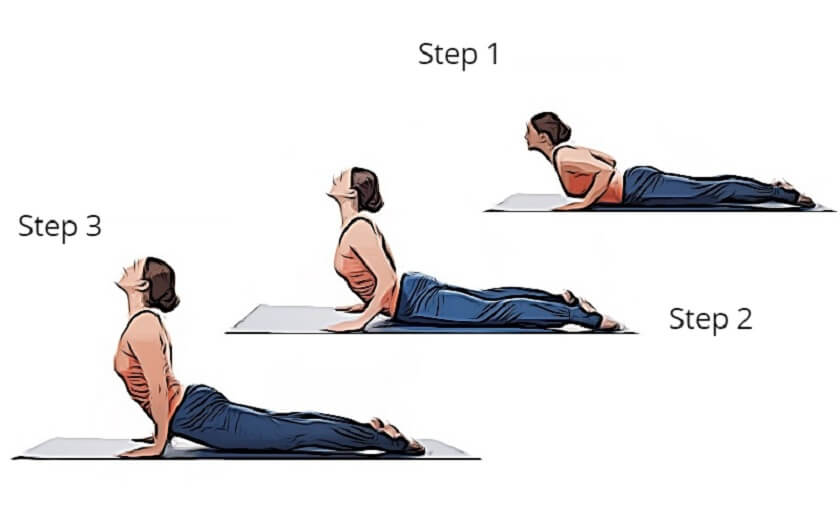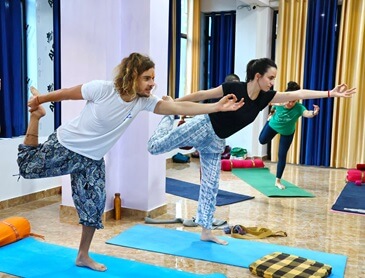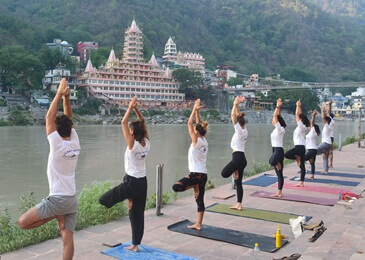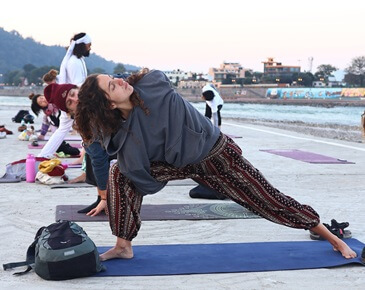
1 Jul. 2019
Bhujangasana (Cobra Pose) Benefits, Adjustment & Cautions
Bhujangasana (Cobra Pose) Bhujangasana emulates the action of the cobra raising itself just prior to striking at its prey. We have already discussed Ardha Bhujangasana, which is the preparatory pose for mastering bhujangasana1. If your back is stiff then you should do Ardha Bhujangasana just before doing Bhujangasana. Otherwise, Bhujangasana alone is sufficient.
Technique Lie flat on the stomach with the legs straight and the soles of the feet uppermost. Place the palms of the hands flat on the floor below and slightly to one side of the shoulders; the fingers should point forwards and the arms should be bent with the elbows facing backward. Rest the forehead on the ground. Close your eyes. Relax the whole body, especially the lower back. This is the starting position. Breathe out slowly and deeply. Then as you breathe in raise the body in the way we will describe. Slowly bend your head backward so that the chin eventually points forwards and the back of the neck is compressed. Feel the stretch of the front part of the neck. Now the arms must be brought into play. Slowly raise the head and shoulders off the ground by progressively straightening the arms. Feel the flexion of the back roll down the spine starting from the neck region and working towards the lower back; try to feel the flexion of each individual vertebra throughout the movement. Remember, it is the arms that execute the movement. Keep the back and legs as relaxed as possible. Try to keep the navel in contact with the ground; if the navel is raised too high then the bend tends to be at the knees and not the back. Continue slowly to arch the back as far as flexibility will allow. In this position, the back of your head should point towards your feet. Your arms may or may not be straight - it depends on the flexibility of your back You will feel the tension in the face and will be tempted to open your mouth; try to relax the facial muscles and keep the mouth closed You will feel a pleasantly painful sensation in the lower back; this is a good sign that you are doing the asana correctly. Hold this final pose for as long as comfortable.
On exhalation return to the starting position in the same way that we have just described. but in the opposite order. The movement should be slow and synchronized with the breath. Remember, at the end of the movement the nose should brush along the floor so that eventually the forehead rests on the ground Relax the whole body. Final position for beginners Beginners, especially if they have stiff backs will probably find it difficult to stay in the final position for more than a few seconds. they should perform the asana as follows: Raise the body while inhaling as already described. Hold the breath in the final position for a short period of time without strain. Make sure the back and legs are as relaxed as possible. Then lower the body while exhaling. Repeat this movement a number of times.
Final position for those with supple backs This form of the final position gives the most benefits. We advise everyone to adopt it when their back becomes sufficiently flexible. Raise the body in the way already described. In the final position first of all breathe in and out normally a few times. Ensure that the back is relaxed. Then inhale deeply, while simultaneously pushing the shoulders a little further backward in line with the spine. We emphasize that the back must remain relaxed throughout. It should take no part in executing the movement. If you tense the back muscles then this directly opposes the aim to accentuate the arch of the back. It is the lower back that one tends to tense. One's awareness should be directed to relaxing this area as much as possible. If this part of the back is relaxed then the rest of the back will almost certainly follow suit.
During this inhalation feel the flexion of the lower back. Then exhale and let the navel sink further downwards. This will occur automatically, producing a not disagreeable twinge of pain in the lower back. This will further arch the back. Try not to resist this flexion by tensing the muscles. Then breathe in and repeat the process again. Do this a number of times and then return to the starting position while exhaling. Mistakes to avoid The most common error is to raise the abdomen off the ground. This is wrong for it bends the legs and not the back. If this is done then the asana fails to give many of its benefits. Often the hands are placed either too far in front of or behind the shoulders. The position can be adjusted according to the flexibility of your back, but normally the hands should be placed beside the shoulders. Many people let their mouths sag open. Keep the mouth closed but without tensing the facial muscles.
Often the head is allowed to drop forwards. This reduces the influence of the asana on the neck region. Hold your head as far back as possible. Some people tend to treat this asana as though it is one in a series of physical jerks. Amidst gasping and straining of all the body muscles together with facial contortions they attempt to force their back to arch. This is totally wrong. Relax the body as much as possible. Awareness and duration One should be aware of breathing and movement throughout the practice. Make sure that the breath is synchronized with the movement as this helps to obtain the best possible benefits from the asana.
Be aware also of the back and its relaxation, particularly the lower back. In the final pose be aware of the flexion of the lower back. Three minutes is a reasonable time to spend performing this asana whether you stay in the final pose or whether you repeat the movement several times. However, you can use your discretion in choosing a suitable duration of practice. Sequence This asana gives the most benefits if it is preceded or followed by a forward bending asana.
Limitations those people who suffer from peptic ulcers, hernia, intestinal tuberculosis, or hyperthyroidism should not do this asana. If you have any other complaints that you think may preclude the practice of Bhujangasana seek the guidance of a competent yoga teacher. Benefits This asana increases the flexibility of the back and massages the abdominal organs. It gives many other similar benefits. In particular, it influences the kidneys and the adrenal glands. The kidneys purify our blood.
During Bhujangasana they are compressed thereby removing stagnant blood. On resumption of the starting position, the kidneys are irrigated with a fresh supply of blood. A message of these important organs is normally difficult for they are comparatively inaccessible. Bhujangasana overcomes this difficulty, and improves the efficiency of the kidneys and thereby the health of the whole body. The adrenal glands, situated on top of the kidneys, also receive a good massage and so are encouraged to work more efficiently. These glands secrete various hormones which have vast repercussions on our mind and body. The secretion of adrenaline which affects our degree of tension or relaxation is regulated. This helps give our mental and physical constitution more stability. Cortisone is another major hormone secreted by the adrenal glands.
This has been found to be closely associated with the occurrence of rheumatism. Bhujangasana helps to maintain and encourage the correct secretion of this hormone and has been found very useful in alleviating rheumatism. Various ailments and general unhealthiness of the body occur through stiffness of the spine. Remember the spine is the major channel that carries all nervous impulses from the brain to the body.
A stiff spine interferes with this system by impeding nerve connections. Efficient nerves require a good blood supply. If the spine is stiff then the back is not flexed sufficiently to squeeze out stagnant blood. Bhujangasana loosens up the spine, removes impure blood from the back region, and tones up the nerves. The overall result is better communication between the brain and the rest of the body, leading to increased health. This asana massages the organs of the abdomen and pelvis such as the stomach, pancreas, liver, gall bladder, and sexual and eliminative organs.
In particular, we recommend it for treating female disorders such as leucorrhoea, dysmenorrhoea, and amenorrhoea as it notably tones the ovaries and uterus. Those people who suffer from a slipped disc or sciatica can also benefit from this asana, but they should be careful. Many people suffer from chronic backache or neckache by sitting in one position for a prolonged period of time or by having a generally stiff and unhealthy spine. Bhujangasana acts as a useful remedy.
The thyroid gland is also regulated. This has a large part to play in maintaining a healthy body and its optimum condition is essential. Bhujangasana expands the chest, which improves one's breathing habits.


